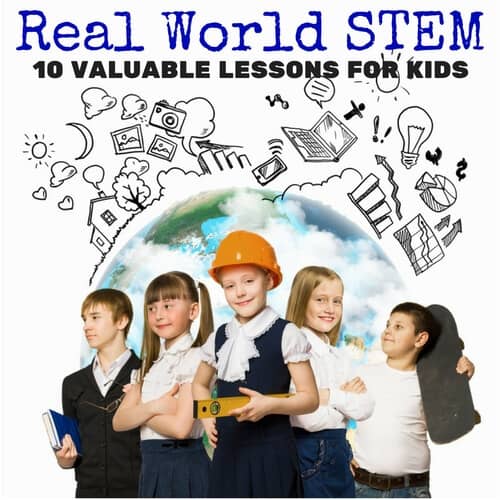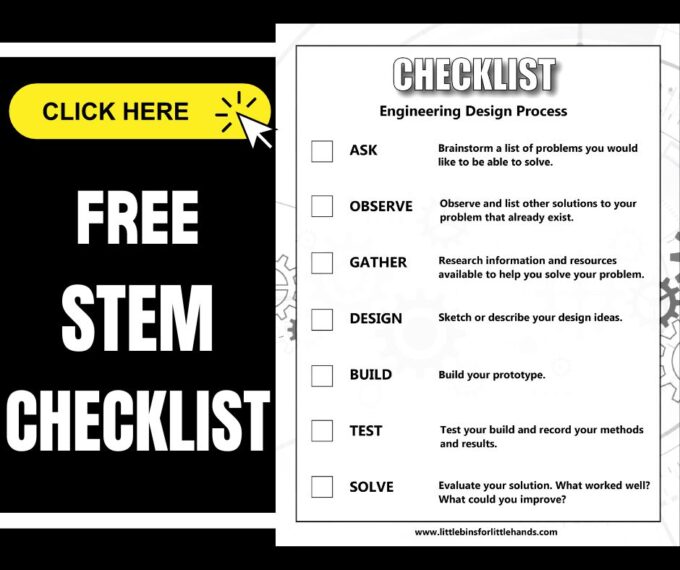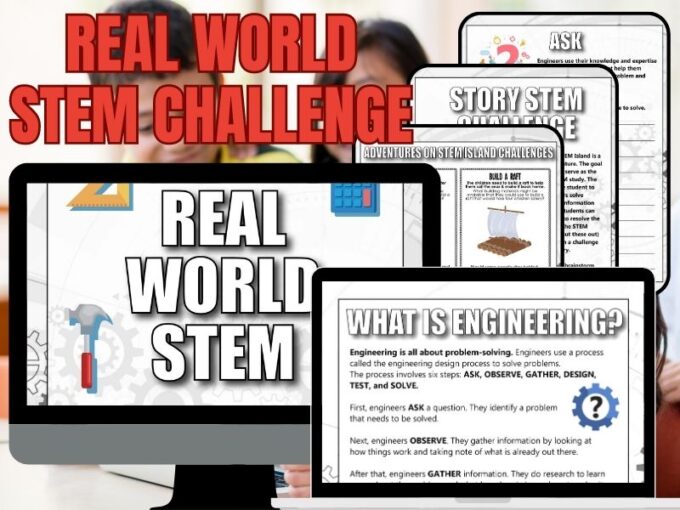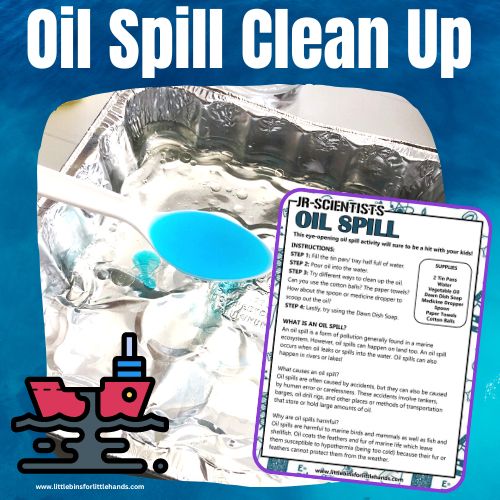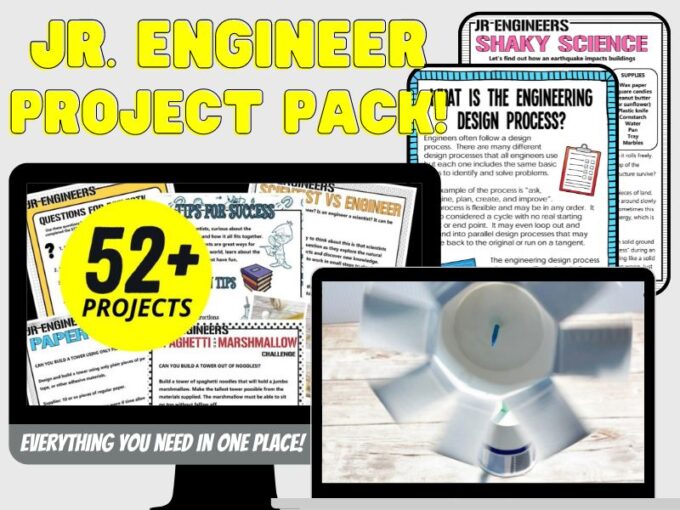Real world STEM projects are a great way for kids to develop and practice their problem solving skills. Learn how to set up real-world STEM challenges as part of a STEM or science curriculum in any classroom, group, or home. Use our handy free STEM challenge checklist to guide the process from identifying a problem, developing a solution to reflecting on the effectiveness of that solution. Let’s support our kids with STEM skills, to find and solve problems in their community!
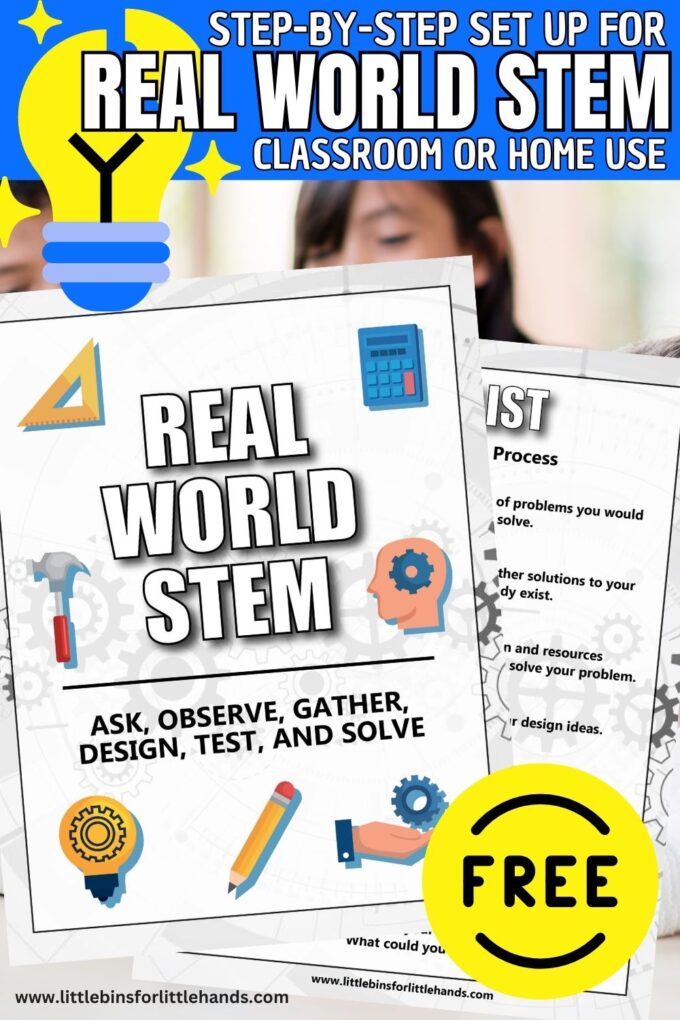
Solve Real World Problems With STEM
Quick STEM challenges, easy STEM activities and even STEM challenges with paper, are lots of fun to set up in the classroom, at home, or in small group settings. In fact, it is a great place to start if your kids have not had much exposure to the problem-solving process we outline below.
The difference is that kids are given the challenge or question to investigate. For example, our egg drop project requires designing something that will stop eggs from cracking when dropped from a height. Kids are given a problem and then design and test a solution.
In contrast, real-world problem-solving requires kids to identify a problem in their local community or perhaps even a global issue, and then they come up with possible solutions. It requires flexibility, resilience, resourcefulness, and a certain degree of creativity!
Tips For Real World STEM Projects
Depending on the age and level of your kids, continue to scaffold the task as appropriate. Grab our printable STEM project pack below to make that even easier! It includes a number of real-world problem-solving worksheets to guide your kids through the process, and can be used easily in the classroom or at home.
One way to scaffold is to provide the topic from which kids choose a problem. For example; environment, accessibility, water, education, buildings, cities, or rural areas. Cross-curricular topics, that is, they involve more than one area of learning, are great for real world STEM projects!
Working in small groups is also another great way to provide support to students with solving real world problems. Of course, giving kids a time frame for each part of the project (see the problem solving process further on) helps too!
Remember with real world STEM projects, having a go and engaging with the problem solving process is more important than the “correctness” of the solution. Perfection is not the goal!
What Is STEM For Kids?
So you might ask, what does STEM actually stand for? STEM stands for science, technology, engineering, and math. The most important thing you can take away from this, is that STEM is for everyone!
Yes, kids of all ages can work on STEM projects and enjoy STEM lessons. STEM activities are great for group work, too! You can read more about the valuable life lessons that STEM can provide kids here.
STEM is everywhere! Just look around. The simple fact that STEM surrounds us is why it’s so important for kids to be a part of, to use, and to understand STEM.
From the buildings you see in town, the bridges that connect places, the computers we use, the software programs that go with them, and to the air we breathe, STEM is what makes it all possible.
Interested in STEM plus ART? Check out all our STEAM Activities!
Engineering is an important part of STEM. What is engineering in kindergarten and elementary? Well, it’s putting together simple structures and other items and learning about the science behind them in the process. Essentially, it’s a whole lot of doing!
Helpful STEM Resources To Get You Started
Here are a few resources to help you introduce STEM more effectively to your kiddos or students and feel confident when presenting materials. You’ll find helpful free printables throughout.
- Engineering Design Process Explained
- What Is An Engineer
- Engineering Words
- Questions for Reflection (get them talking about it!)
- BEST STEM Books for Kids
- 14 Engineering Books for Kids
- Jr. Engineer Challenge Calendar (Free)
- Must Have STEM Supplies List
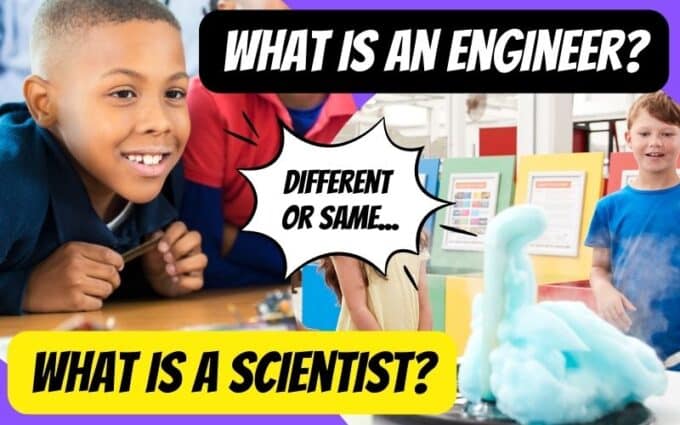
Checklist For Completing Your Real World STEM Project
Want your kids to work on real world STEM projects? Here is a summary of the process you want them to follow. Use it as a guide!
1. Ask – Brainstorm a list of problems you would like to be able to solve.
2. Observe – Observe and list other solutions to your problem that already exist.
3. Design – Sketch or describe your design ideas.
4. Build – Build the solution or protype
5. Test – Record your methods and results.
6. Solve – Evaluate your solution. What worked well? What could you improve?
The Problem Solving Process
Engineering is all about problem-solving. Engineers use a process called the engineering design process to solve problems.
The process involves six steps: ASK, OBSERVE, GATHER, DESIGN, TEST, and SOLVE.
First, engineers ASK a question. They identify a problem that needs to be solved.
Next, engineers OBSERVE. They gather information by looking at how things work and taking note of what is already out there.
After that, engineers GATHER information. They do research to learn more about the problem and what has already been done to solve it.
Once engineers have enough information, they move on to DESIGN. They use their knowledge and creativity to come up with a solution to the problem.
After they have a design, engineers TEST it. They build a prototype of the solution and see how it works.
Finally, engineers SOLVE the problem. They take what they have learned from testing and make improvements to their design until they have a solution that works.
Engineers use this process to come up with creative solutions to real-world problems.
Get Your Printable Real World STEM Project Pack!
Are you looking for more than a simple checklist? How about a complete, done-for-you Real World STEN project outline for the kids to read through and fill in? All the information you need to identify and solve a local challenge is included!
Perfect for elementary and middle school-age kids! Plus, I have added a bonus Island STEM Story with fun challenges based on the “real” problems the kids in the story need to find solutions for! It’s a great way to start with the idea of solving real-world problems on a smaller scale!
STEM Projects That Are About Real World Problems
Not sure where to start? These ideas below are based on real world problems, and are a starting point to get kids thinking about an issue and developing possible solutions!
Beach Erosion Demonstration
Explore solutions for the problem of coastal erosion.
Earthquake Experiment
Some parts of the world frequently experience earthquakes. Get kids to come up with possible building designs that would withstand movement caused by earthquakes.
Oil Spill Experiment
Understand what it is an oil spill and explore ways for oil spills to be cleaned up before they damage the environment.
Soil Erosion
Explore the causes of soil erosion, why it is a significant problem and what can be done about it with this real world STEM project.
DIY Solar Oven
Investigate the most effective way to heat food without traditional energy sources. A significant issue in underdeveloped parts of the world.
Water Filtration
What can people do when they don’t have access to clean drinking water?

Printable Engineering Projects Pack
Get started with STEM and engineering projects today with this fantastic resource that includes all the information you need to complete more than 50 activities that encourage STEM skills!


